#st brighid
Explore tagged Tumblr posts
Text
Excerpts from Ronald Hutton’s Stations of the Sun on Folk Practices Concerning St. Brigid
Interspersed are photos of my own Brigid Dollies, beds, and crosses.









#brigid#brighid#st brigid#st brighid#folk christianity#brigid bed#brigid doll#brigid cross#corn dolly#ireland#irish#isle of man#Hebrides#ronald hutton#stations of the sun#Scotland
34 notes
·
View notes
Text
How I’m Celebrating Imbolg
As a Brighid devotee, I thought I’d share how I’m spending Imbolg with my partner!
I’m personally celebrating the evening of January 31st through February 3rd! Most fire festivals were more than a one day event and I didn’t want to pack everything into 1 day anyways.
On January 31st, we put out our Brat Brídes, hanging white cloths on our door.
Then we candle painted! Using little tea lights, we painted with the hot wax onto some larger candles
I had my own flame tending shift so I finished that
Today, February First, we got all of our supplies for the day and went to the park to spend some time in nature while drinking our coffees. I found a dandelion to bring home for Brighid’s altar and also some rosemary!
Then we came home and started baking some bread, specifically Garlic Braided Bread and also made our own butter
We are preparing a bit of a feast, we got some apples and 3 different kinds of cheese (baking some brie!) to go with the bread along with some mashed potatoes.
Some bread and cheese will be offered to Brighid.
After we eat, we’re going to do some Imbolg divination spreads for the season ahead
Lastly for the night, we will make a Brighid’s doll (Brideog) and a Leaba Bhríde to put her in.
Tomorrow, February 2nd, we will be walking the bounds and grounds, doing some cleansing and cleaning and then some warding around our home.
Then we will be baking some Rosemary and Lemon Curd Tassies! (recipe below) We will offer one to Brighid as well.
On February 3rd, we will be meeting up with a friend to conclude our festivities
We’re going to go to a cemetery and commune with the spirits
Then we’re going to find some natural material for making Brighid’s Crosses and do them while we’re out!
Finally we’re going to go to a local plant store and buy a new houseplant, and plant our intentions for the season while potting it.
What’re you doing for Imbolg??

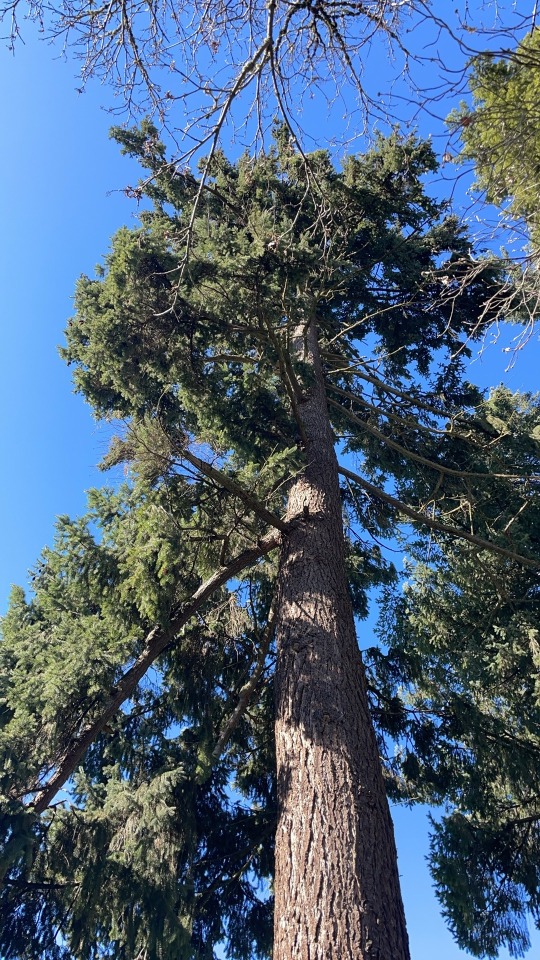
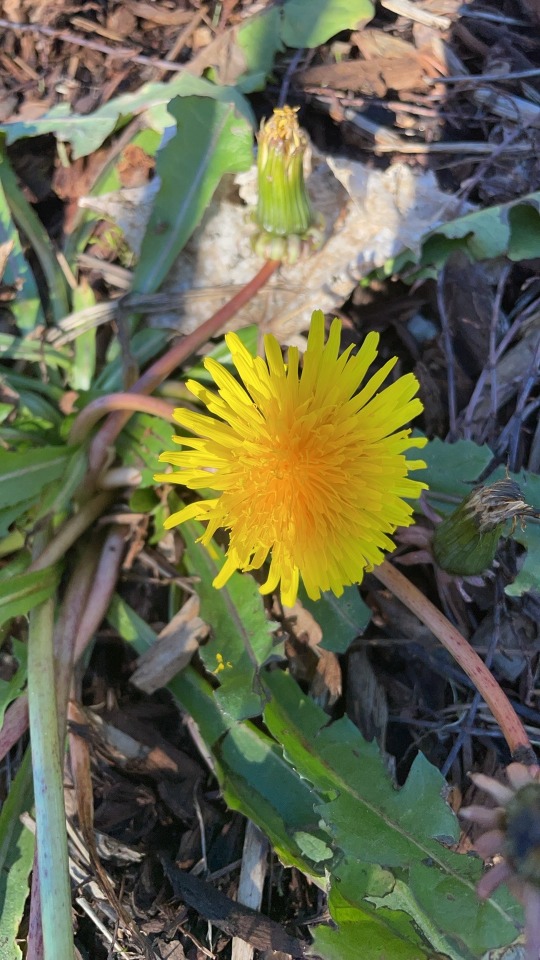
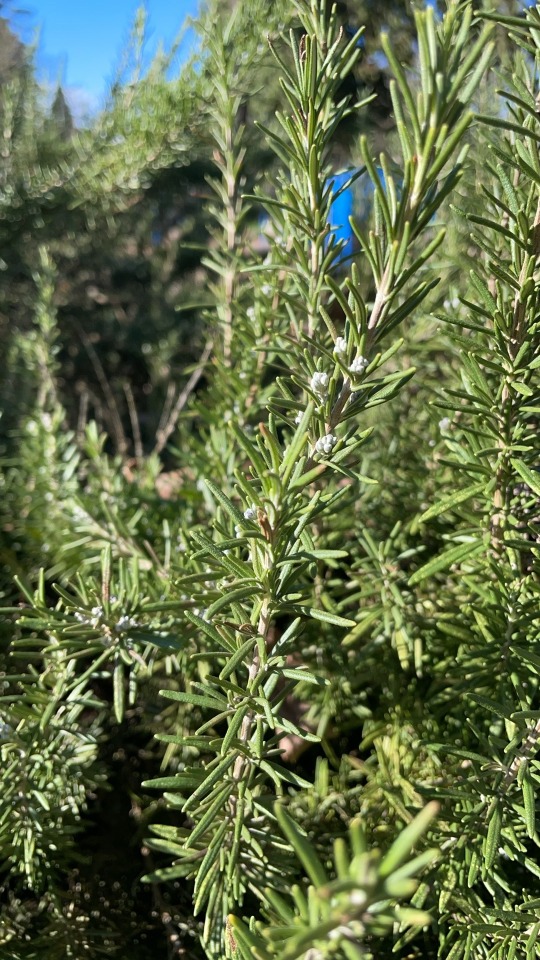
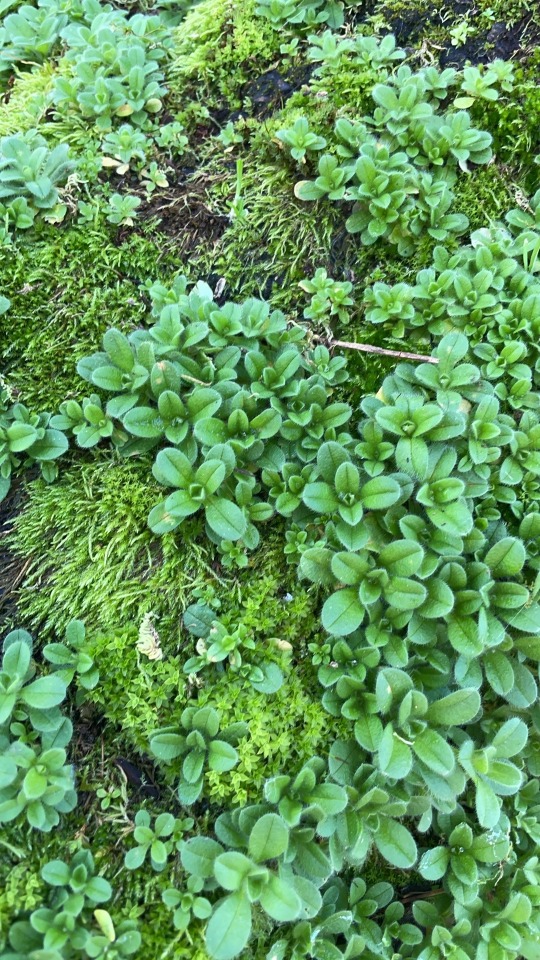

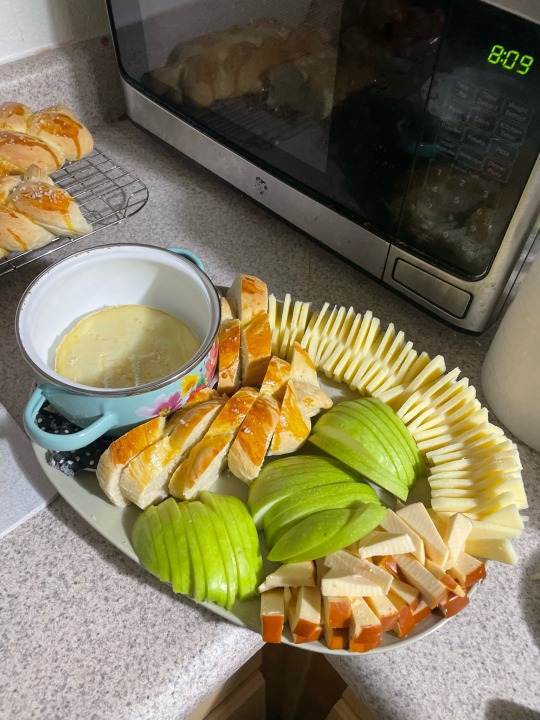
#Imbolg#Imbolc#Brighid#Brigid#Fire Festival#Brid#brighid deity#brighidine#Saint Brigid#Polytheism#Gaelpol#Irish Polytheism#Irish Paganism#Animism#Brighid’s Day#Brigid’s Day#st. brigid’s day#Paganism#Spirit Work#Kitchen Magick#Folk Magic#Deity Worship#Nature
10 notes
·
View notes
Text
Brighid and Bee swarms: I will not molest the swarm queen, nor will the swarm queen molest me.
"Carmichael (1928), in his review of Scottish customs attaching to the Feast of Saint Brigit, speaks of what he calls 'a propitiatory hymn' sung to 'a serpent' which 'is supposed to emerge from it's hollow among the hills on St Bride's Day'. Some of the versions of the 'hymn', describe what emerges from a tom, 'the knoll', as rigen ran, 'a noble queen', and, on the basis of my argument hitherto, I take this to be a clear reference not to any serpent, but rather to the queen bee and, therefore, by implication, to Brigit herself.
La Bride nam brig ban On the day of Bride of the white hills Thig an rigen ran a tom The Noble Queen will com from the Knoll, Cha bhoin mise ris an rigen ran I will not molest the Noble Queen, 's cha bhoin an rigen ran rium Nor will the noble queen molest me.
By way of further support for this reading, an emendation of Carmichael's interpretation of a tom as 'the knoll' can easily be made, substituing for 'knoll', 'round heap', 'conical knoll', 'ant-hill', dictionary definitions of tom (Dwelly, 1918), one or all of which readily could be taken as referring to a bee-nest or bee-hive. Likewise, Carmichael's reading of rigen ran as 'noble queen' may also be open to an interpretation other than that offered by him here: the qualifying element ran, taken by Carmichael to be the adjective ran 'noble', constitutes a suitable soubriquet for a royal personage, to be sure, but it is also a word which might easily be confused with ràn meaning, among other things, 'melancholy cry', 'drawling, dissonant roar or cry' (Dwelly, 1918). Needless to say, the idea of a 'noisy' rather than a 'noble' queen slots in well with the tumult which accompanied swarming according to early writers (...)"
—Hearth-prayers and other traditions of Brigit: Celtic goddess and holy woman. Article by Ó Catháin (Séamas) in JRSAI 122 (1992), pp. 12–34.
#brighid#brigit#saint brigit#carmina gadelica#irish polytheism#irish recon#irish reconstructionism#scottish polytheism#scottish reconstructionism#scottish recon#brighid goddess#celtic recon#celtic polytheism#highlands#quotes#st bride#imbolc#imbolg
9 notes
·
View notes
Text

Same walk this morning. I walked out of the woods on the northeast path instead of the others that I usually walk and it opens onto a low south-facing slope. Because of the warm sun from the south the whole slope was bare of snow and birds that can't easily find food when snow covers the ground were active there, including at least 5 bluebirds. There's a bluebird box nearby and despite it being January it looks like this bluebird pair have been getting busy! It's easy for us to forget, living our modern human lives, that once we're a month out from solstice the days are significantly longer and for nature that makes a difference. In a couple days it will be Imbolc, also know as St. Brigid (Brighid, Bridget)'s Day, halfway between solstice and in the northern hemisphere, spring equinox. Trees feel the warmer sun and longer days and sap starts to stir, making their leaf and flower buds swell. Not only did I see these bluebirds nesting and feeding young but for the first time since autumn I heard a cardinal singing its longer song, its love song, and titmice too changing their tune toward courtship. This is the very beginning of spring although the landscape won't be green until some time in April and most of the trees won't leaf out until May. We can still get lots of snow but underground and among the birds changes are happening.
#long post#pennsylvania#birds#bluebirds#birbs#sialia sialis#january#imbolc#st brigid#winter#nest box
206 notes
·
View notes
Text

Bridget - Bright Goddess of the Gael Talon Abraxas
Brigid was a goddess of the Tuatha Dé Danann. She was a daughter of the chief of the gods, The Dagda, and was known as a goddess of healers, poets, smiths, childbirth and inspiration. Her name means “exalted one”. This article by Branfionn NicGrioghair explores the story of Brigid and the later Christian Saint, St. Brigid, who is still honoured to this day, especially in Faughart, her birthplace, and Kildare, where she founded a monastery.
Brigid is the Daughter of the Dagda, one of the more universal deities of the pagan Gaelic world. She is known as the Goddess of Healers, Poets, Smiths, Childbirth and Inspiration; Goddess of Fire and Hearth and a patron of warfare or Briga. Her soldiers were called Brigands. Her name means “Exalted One.” She is also known as Brigantia, Brid, Bride, Briginda, Brigdu, and Brigit. She is said to lean over every cradle. The lore and customs have continued to this day regarding Brighid, more vividly than all the other Gaelic deities combined.
In the middle ages, Brigid is in many stories. In one she is the wife of Bres, the half-Fomorian ruler of the Tuatha Dé Danann. Their son, Ruadan, wounded the smith god Giobhniu at the second battle of Magh Tuireadh but he himself was slain in the combat. Brigid then went to the battlefield to mourn her son. This was said to be the first caoine (keening), or lament, heard in Ireland. Until recent time, it was a tradition to hire women to caoine at every graveside. In another story, Brighid was the wife of Tuireann and had three sons: Brian, Iuchar and Ircharba. In the tale, The Sons of Tuirean, these three killed the god Cian, father of Lugh Lámhfhada when he was in the form of a pig.
She was transformed by the Church of St. Brigid into St. Brigid about 453 C.E. Saint Brighid is known as the patroness of farm work and cattle, and protector of the household from fire and calamity. To this day, one of her most common names in Gaelic is Muime Chriosd, “Foster-Mother of Christ.” St. Brigid was said to be the daughter of Dubthach, a Druid who brought her from Ireland to be raised on the Isle of Iona, sometimes called “The Druid’s Isle.”
39 notes
·
View notes
Text
Wheel of the Year 101 - Beltane
The post on website
Hello tumblr! Today is Beltane and I've had this post mostly written for about a week now, just got caught up with other things. Hopefully I'm not too late though!
In this post, you'll find out:
the history of Beltane
when and how to celebrate (with reviving some old traditions!)
links to recipes and playlists (with over 100 songs)
correspondences (foods, herbs, incense, ...)
Click Keep Reading to read the entire post, or you can read it on the blog page Beltane. On the web page you can also find download link for the .md file if you'd like to import it as a grimoire page into notion or logseq!
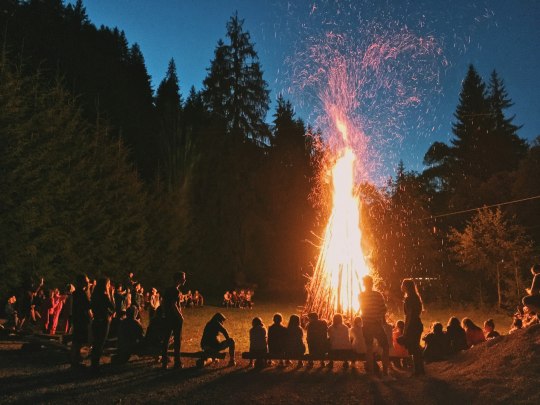
Beltane
History
I will start it off with the following: Beltane is actually Anglicised version. It would be more correct to write it as Bealtaine, which also shows its pronounciation (Bee-awl-tin-a). If you’d rather like to hear the pronounciation, Forvo actually has 4 different voice notes of people from Ireland pronouncing it. I will probably keep using the word Beltane going forwards, but it is useful / interesting to know the etymology as well. It comes from celtic Baal or Bel, meaning “Bright one”. Like Imbolc (which was also called St. Brighid’s day), Beltane also is tied to a celtic deity. This time it is Belenus or Belenos, the god of fire, associated also with sun, healing and prophecy.
In Wiccan traditions this is the time when the Horned God fully matures and mates with the Goddess.
Similarly to Imbolc, Beltane is also the midpoint between an equinox and solstice and is one of the 4 fire festivals. It is the beginning of summer and is usually celebrated on May 1st (although some may choose to rather celebrate on a different day, if that’s what the midpoint between summer solstice and spring equinox falls at).
I’ve seen it connected to fertility again, but that’s mostly because fertility is the undertone of most sabbats, or because that’s what the modern “May day” represents. Notice that the Wiccan celebration of this sabbat actually is about this, perhaps also coming from the later interpretations of Beltane.
It is also seen as the time when the Aos Sí (Fair Folk) interact more with the human realm, and so people make offerings to appease them and did rituals to also protect against them. Other than that, the festival is mainly all about protection. The fire rituals were meant to protect both people and the cattle, that they also moved from one pasture to another during this time (a concept called Transhumance). They were moved to the lower summer pastures. This Transhumance seems to have been actually the core of Beltane.
One beautiful custom was to extinguish all fires in the home before Beltane. During the communal bonfires they walked around and invoked good fortune and protection for the coming year. Once they returned home after the celebrations, they carried back a torch from the communal fire, to relight the hearth.
The month of May is well known for the blooming flowers, and Beltane traditions reflected this as well. Flower garlands were made, and flowers would be seen pretty much anywhere. Most often used one was a yellow flower, for the colour is symbolizing sun and light.
One other custom was to burn bushes, once again because of the fae, who were thought to take refugee there. And one custom that has appeared later on was the crowning of May queen and dancing around the maypole, which I think most of us has seen somewhere, at least on pictures, since this tradition seems to have also grown nearly extinct.
How to Celebrate
As I’ve already mentioned in the history section, Beltane is one of the fire festivals. If it is within your possibilities, you can light a full bonfire! Or maybe a smaller one in a fire pit, where you would normally grill sausages. And of course the variant many of us go with - candles. And if you’d like, you can also bring out the old tradition of extinguishing flames at home (so mostly candles) and then relighting it again with protective intents.
One more tradition I haven’t mentioned - first dew on the morning of May, if applied to the face, would cause beauty. You can certainly do this as soon as you get up in the morning!
Next up is the famous Maypole. While you might not have the chance to participate in it in your town / village community, you can certainly make your own! I’ve seen an amino post by Isa and Björn (the name is down below), in which wrote their wishes on long strips of thin, biodegradable paper and tied them to a young birch tree, while placing a small gemstone at its base as an offering. You can technically also tie strips of paper to some bonsai and then take them off after a while, perhaps burning them. The sky is the limit!
FLOWERS. Pick them, make garlands, make crowns, do anything! If they’re yellow, even better. Maybe it could also be time to look into herbology. Or make yourself some tea from scratch.
Other things:
Protection spell time!
Recognize any fae you work with / know live near you
Wear corresponding colours, decorate your altar, …
Check your wards / shields / other protections
Spotify playlist
YouTube playlist
Beltane tarot spread
Recipes to celebrate Beltane
Correspondences
Incense: rose, primrose, lilac, vanilla, cinnamon Herbs: primrose, hawthorn, rowan, elderflower, marigold, hazel, holly, cowslip, mugwort, daffodil, pretty much any yellow flowers (careful about toxicity!), lily of the valley, daisy, willow, woodruff Decorations: maypole (even tiny ones), flowers (mainly yellow), ribbons, candles Colors: yellow, orange, red, perhaps also green and white Foods: oatmeal, milk, milk products, wine, cherries, bread Stones: bloodstone, quartz, rose quartz, amethyst, onyx, orange calcite, citrine, amber, carnelian Other names: Lá Bealtaine, Latha Bealltainn, Beltain, Beltine, Beltany, May day, 2nd fire festival Other celebrations this time: Rowan Witch Day (Finish), Sacred Thorn Tree Day (Irish), Festival of Shashti (Hindu), Earth Day, Samhain (southern hemisphere) Misc: light, fire, protection, purification, fae, for some also fertility and growth
Sources
Llewellyn’s Sabbat Essentials - Beltane (Rituals, Recipes and Lore for May Day) by Melanie Marquis (2015)
wiccaliving.com - Beltane
mabonhouse.co - history of beltane
thornandclaw.com - beltane
paganpages.org - beltane correspondences
study.com - Belenus mythology, cults & facts
cpre.org.uk - origins of beltane
Bealltainn: Transhumance & The Gaels by Dead on P&W Amino
Mordred’s Guide To: Lá Bealtaine (Beltane) #HolidayCelebrations by Mordred on P&W Amino
Beltane: Overview and how to celebrate by city witch on P&W Amino
Blessed Beltane Happy Beltane and my Rituals this year by t. on P&W Amino
all pictures in this post are from unsplash, free stock images

Thank you so much for reading! I hope you found this useful, or at least interesting. If you'd like, go check out the library for more posts like this! There aren't as many right now, but it will keep filling up. I also reblog witchy posts I find useful, so consider giving a follow! And I'll see you in the next one.
#withcraft#pagan#pagan witch#witchblr#wheel of the year#beltane#spiritualism#witch blog#tarotblr#tarot#kitchen witch#bealtaine
25 notes
·
View notes
Text

Part Nine: Drownings
Chapter Directory: Here
Current Installment: You are here!
Author's note: Inspired by the 1950s short story "The Man Who Came Early" by Poul Anderson. I rewrote this seven times and had an unrelated mental breakdown. I'm still not happy with it but at least everything that was in the outline is in this version. No major trigger warnings for this chapter. Also on ao3 here.
Burial Mound, Cumbria
Matthew slid beneath the water, practically consumed by the dark concentric circles flowing out and lapping gently at the stone. They had built the spring like an inverted broch, no mortar, all perfectly fitted stone.
“No!” Arthur was whipping off his coat. The wool would only become waterlogged and drown him. His body was a spring, energy coiling from shin to shoulder, arms thrown up over his head to break the surface tension, anything to give him an extra boost to get and clasp his son to him. Toes off the ground, arms snatched him back.
“No!” Rhys was slamming him to the ground like he was a boy, and Mother was a corpse upon a driftwood throne. There’s scuffling. He flipped himself over, white-hot rage replacing whatever desperation was before.
“Let me go!” It was always English when they argued, a force of speech as effective as a spear point since the Angles.
Rhys drove down, rolled him over, face in the moss and clover of the Cumbrian soil beneath his face, the heart of him a thousand years ago and forbid him in a dead language. More loss. He wouldn’t take more loss. But his arm would snap if he struggled anymore.
“Rhys.” Brighid was pulling him off. “Rhys, let him go.”
“No!” He shot back at her. “Absolutely not—”
“You have too.” She looked gentle now, not fearsome. Herself, St. Brighid, not the warrior goddess mother left her to inherit. Soft clover, her prized cattle roamed rather than the wine-dark seas that thrashed her shores. Her hand released him.
Rhys was protesting, but he wasn’t fighting or wrestling. Arthur couldn’t hear him or Brighid now. Their voices were silent; Alasdair was on the ground, shed of his clothes, bleeding from a cut on his hairline. He almost snorted. Brighid would have had to strike him as hard as she could to stop him. Alasdair was saying something, mouth open to the French that was so familiar, calling after his favourite nephew. But his attention was gone now. The water spoke to him with Alfred’s laugh.
He dove.
—
Sometimes, when Matthew hasn’t slept, the ice starts whispering at home. Singing or whispering, luring him with cracks in the seracs as serpentine as a woman’s hips. It whispers about how much of him is already frozen. He can rest as much as he wants if he lays down and slips into blue-black waters. It sighs and tells him he can close his eyes, and everything will be all right. Tempts him. He’ll be so numb, but for a good reason. Everything would slide away, and he would be as empty as he felt. Sometimes, the ice sings.
And sometimes, he answers. He’s laid himself down into a gap in the pack ice for a nap so casually that the frigid water rushing over him feels gentle, not cold and cutting. Matthew has closed his eyes and let himself float away. He could emerge in a few months with the spring melt, float up, and return refreshed and rebuilt. Any absence unconsidered, and anyone who might have eventually noticed usually yet unbothered.
The spring sings like that, in a gentle burble instead of staccato groans but promising nonetheless. His brother’s laugh has gone quieter, disappearing under the water. The dry stone edge of the spring is cold under his hands, but the lure is louder, and the water is not so cold. Words his aunt sang drop from sounds flesh might make to the deep metallic of something like bronze clacking on stone. Like wind forced through chimes or a horn. The water sings like that, a hymn for the missing or maybe the mad, urging him on as he let himself sink and then swam down, searching for a bottom as he kept one hand on the round stone wall.
Then, the world was rotating. The light had gone so bright. Turning, he slammed against the stone, what air he had left bubbling out of his mouth and gurgling away. Fuck. He tried to twist and paddle up; he could swim like a fish, but something had snagged—no! Something had grabbed and hauled him up from behind. He must have been running out of air. His vision flashed red, even against his shut eyelids, and he broke the surface. Heaving, he groped for stone but found green and freshly cut wood boards. A woman looked down at him, a bucket fitted together of wood in her hand. Her hair was pulled out of her face in a crown of braids. The linen shift she wore draped off her shoulders and dipped below the neckline of her bodice, a style that had been popular when he was a child, but it was her eyes he’d locked on.
“Katya?” She looked a bit healthier than he’d ever known her to be, but her eyes were the same sky blue. Hope and harvest blue. He would have recognized her if he didn’t have eyes, though, because that part of him that was hers sang louder than the water or the shout coming from behind him. Something was pulling at his shoulder. He didn’t care. Matt pulled himself closer. He could smell summer wafting off her.
Her surprise turned to something tender, and her hand lifted to his face and beckoned behind him. Someone else was saying his name from his shoulder. He didn’t care.
“I’m not what you’re looking for yet.”
“Yes, you are.” He said. “I’ll always look for you.”
“But not yet.” She insisted. Pushing his soaking wet hair off his face. “Return to my dreams, wraith.”
“Katy—” He was being dragged away then. She didn’t look sad but hopeful.
“Swim.”
“What the fuck— DAD?”
“My sons and their cocks, I swear to God.” Arthur was griping, and Matt was spinning, looking for a handhold to climb the wall of the… was it a well he was inside of? It was not a spring; the water was too cold and too dark. He was shivering. Katya was there, happier than he’d ever seen her, and he was stuck here, pushed away, banished.
“Matthew!” Two hands on his face, making him look. His father was soaked but deathly serious. “Focus.”
“What?”
“Focus on your brother and swim.”
His father’s voice cut the panicked babble of thoughts, and he heard the laugh again. He sucked in the air and dove. If it was one thing he was, it was a good swimmer, reaching out and down, striving forward. He has never seen such darkness. Only the odd, purposeful tap on his calf keeps him in contact with his father. They don’t have much time before Arthur begins to freeze, or they burst for air. His lungs are straining, individual bronchioles tracing branches of pain through his chest when light shines. Harvest gathering greens, mostly, then woad blues and sparks of red like fruit. If only stained glass could flow and distort light like tide pools, it would look like this. He can’t tell which way is up then. He can’t breathe. He’s blacking out, hand reaching for his father’s tumbling form next to him as they fell rather than swam. The colours drained from the world, and rushing water froze, black and fractal.
Then he’s on his back, and his father is slapping him across the face. He jackknifes into consciousness. Dad’s there, dripping like a drowned rat. But his body is normal. No blood showed, no bones were broken, and strength flooded back into his extremities as his body staved off hypothermia in the much warmer air.
“What the fuck was that?” He gasped.
“Breathe.” Arthur is a bit frantic. They’re both shivering. “Focus.”
“Where are we?” Matt was so confused. He recognized stones, the well. But there were so many trees. The trunks were as tall as any he had at home, taller than anything that had been replanted after they’d been hacked from him to build the empire. The rainbow of smeared colour still danced in his eyes and his vision smeared.
“Not where.” Arthur was pale. “When. I haven’t had this many oak trees since before your brother was born.”
“When?” Matt practically gagged on a shiver and laid back down. “Was that—Was that the rainbow bridge? Like the sagas?”
“The— Rainbow bridge? Really, lad? You gawking at Kateryna was the single most heterosexual thing I’ve ever seen you do.”
The less relevant his sense of humour, the more fucked they were. But the blood rushing back into his fingers and toes hurt ungodly amounts. He lost focus again, the trees blurring into the low clouds like brushes into well-used rinse water, only revealing the buttresses of his grandmother’s pre-Christian cathedral in the foliage. Better than stained glass.
He’s lying there, aware of Arthur having gotten to his feet, but not other people, until there are voices. He sits again. A small caravan of wagons heaped with goods stands at the edge of the clearing, and his father is speaking with them. He can only make out so many words. He almost thinks they’re speaking Dutch for a moment, those fluid, almost gurgly sounds Jan makes when he’s happy and well fucked. His body feels so normal now, warm and boneless, like he’s eaten and slept so much he needs to sleep more. He’s supposed to be alert but can’t understand what’s being said. He tried to learn Beowulf by heart once when he was a boy. Before Jack was born and no one cared enough to call a strange creature at the end of the frozen world kin, he’d poured over the pages of an ancient cracked book bound in even older leather. His father has no such issues, understanding or being understood.
“Hƿelċ tīd is hit nū?” He recognized the word for time, but the man laughed and replied in a way that took Matt the logic of forming half-forgotten grammar into a sentence that might not even be the same. That is something for the priests.
More words. He only caught the last two. Ælfrēd Cyninġ.
He sat straight, lightning running down his back. Alfred. Ælfrēd. The pressure of normalcy pushed his consciousness from all sides, embracing that empty, silent despair of days and days. It filled him back with life, like warm water over the cold. Not so near, not so strong, but there. Alive. His brother was in existence.
#hws england#hws canada#the dangeld axe to grind: the viking age time travel au#my writing || cacoethes scribendi
45 notes
·
View notes
Note
Heya! In the spirit of me becoming feral about La Fheile Bride/Imbolc/St. Brigid's Day, I was wondering two things: Do you have a favorite piece of art depicting Brigid, and do you have a favorite thing to cook for Imbolc? I like doing Bannock, but I kinda want to change it up this year.
I have a couple of favorite artworks depicting Brighid, mostly random paintings. I do have a print of this one by angelicshades on etsy hanging in my office. I don't know if it was particularly meant to be a depiction of Brighid, but that's how it hit me when I saw it. And I love me some Alphonse Mucha style art nouveau goddess art.
I don't usually cook a particular meal for Imbolc, but my offering on the day always consists of oatmeal, milk, and honey, sometimes with mead or whiskey as a chaser.
There are plenty of thematic options for Imbolc foods, like milk, cheese, eggs, honey, jams and preserves, oats, bread, beer, and wine. So you could try things like quiche, honey cakes, jam tarts, cheese and herb pinwheels, scones or muffins with honey butter, porridge with fixings, and sweet or savory pull-apart bread.
The foods that I see most often associated with Brighid in modern sources are blackberries, apples, potatoes, fish, cinnamon, and rosemary. So any dish using those might be appropriate as well. Perhaps a nice bit of salmon seasoned with honey, wine, and tart preserves and cinnamon baked apples for dessert. You can't go wrong with a nice bit of soda bread either.
Anyway, hope this helps and Happy Imbolc! 😊
#gamayunsteward#Imbolc#Brighid#food#cooking#witchblr#witch community#pagan#Bree answers your inquiries
43 notes
·
View notes
Text
me making connections between Hestia, Brighid and St Brigid:

2 notes
·
View notes
Text

Pictured Brigid’s bed and doll 2021
St. Brigid’s Eve To Do List
1. Make Brigid doll
2. Hang Brigid cross in welcome
3. Make Brigid bed
4. Prepare Bread and cheese to set out for her.
5. Plan a supper (leaning towards stuffed pork steaks and colcannon from the Irish cookbook my granny gifted me).
6. Put out a St. Brigid’s cloak or snippet of embroidery to be blessed by the Saint for protection in the coming year.
Plans are mostly based on folk customs gathered in Ronald Hutton’s book, Stations of the Sun.

Pictured: Brigid’s Bed and doll 2020
And snakes because:
15 notes
·
View notes
Text

The Celtic crone goddess Cailleach of the British isles gathers Her firewood for the winter’s remainder during Là Fhèill Brìghde during Imbolc. 🔥 (Imbolc/g starts sunset February 1st and lasting until sunset February 2nd.) The Cailleach will make sure the weather that day is bright and clear if she intends to make winter last longer so she can gather plenty of firewood to keep herself warm in the coming months. Traditionally folks celebrate stormy or especially frigid weather on Là Fhèill Brìghde since it means The Cailleach has decided sleep in and will soon run out of firewood ensuring a sooner end to winter‘s chills ❄️
The Dutch who brought a similar legend about a badger to America where the badger became a groundhog, native to the “new world” upon ancient Turtle Island, which is where the Groundhog Day tradition based in Punxsutawney, Pennsylvania, USA came from 🦡 Cailleach is by contrast decidedly human in form, said to have snowy white hair, often veiled, her name translated from Gaelic literally as “old hag”. She is mother of weather, most poignantly storms. ⛈ She rules over winter as a seasonal deity in balance with fire-wielding, milk-laden Brighid who in turn oversees the time between Beltane and Samhain, from May 1st to November 1st. Imbolc is known as St. Brigid’s Day honoring the awakening of spring but it is still within the dominion of the divine crone Cailleach, depicted here in my watercolor sketchbook in honor of Imbolc 🌱

#Imbolc#st brigid#cailleach#goddess#paganism#folk customs#folk tales#legends#crone#divine feminine#pagan things#pagan artist
2 notes
·
View notes
Text
So I was on a wiki dive, as you do, and I ended up reading about the Loa of Louisiana Voodoo, and like, I knew Maman Brigitte existed of course, and that her saint equivalent is St. Brigid. But until now, I didn't know her Yoruba equivalent was Ọya. So naturally I start reading about Ọya. She's the orisha of winds, lightning, and violent storms, of children, and the Niger river and the African buffalo is her sacred animal, and just the more I read about her the more it makes sense why Ọya and Brighid were syncretized Low-key, I imagine them meeting up in the Caribbean and just immediately clicking with each other
3 notes
·
View notes
Text
The Wheel of the Year
[plain text: The Wheel of the Year]
The Wheel of the Year was created by Gerald Gardner, in part based off what was known about ancient Celtic festivals celebrating the year passing, and he named the festivals - some what were known as the names the Celts and Germanic people used for them, some he invented himself. As such, it is a big part of Wicca, but many other witches use it throughout the year (and there are plenty who don't!). The dates listed below (with Gardner's names for the festivals) are for the Northern hemisphere, as the seasons pass oppositely in the Southern hemisphere, they are usually celebrated the other way around.
Samhain (31st October/1st November)
Yule (20-23rd December)(date of the winter solstice varies)
Imbolc/Candlemas (1st February)
Ostara (21st March)(spring equinox)
Beltane (1st May)
Litha (21st June) (summer solstice/midsummer)
Lughnasadh/Lammas (1st August)
Mabon (21st September)(autumnal equinox)
notes: Lughnasadh and Lammas are two separate festivals (historically) that happen on the same date; despite this, many people use the names interchangeably though they are not the same thing. The names Litha, Ostara, and Mabon have no properly verifiable historical basis and most likely have been made up by Gardner.
The two "main" holidays are considered to be Samhain and Beltane, often considered to be the two times when the veil between worlds is at it's thinnest.
Samhain can be linked to Halloween/All Hallows Eve (31st October) and All Saints Day (1st November) as well as Dia de los Muertes (1st/2nd November), reflecting how many cultures viewed it as a time with more spirits/saints/ghosts around. For many, Samhain is considered the "Witches New Year" and is the start of the Wheel of the Year. It marks the beginning of the darker half of the year, as shown in many stories surrounding the Wheel of the Year such as the Goddess and the Green Man, the Oak King and Holly King, and the cycle between the Wiccan Horned God and Triple Goddess.
Beltane happens at the opposite side of the year, and is also called May Day, traditions such as maypole dancing are commonly done at this time of year. It is a spring festival, the beginning of the lighter half of the year, and often associated with fertility and creativity.
Imbolc/Candlemas, also known as St Brighid's Day, is the midpoint between Samhain and Beltane, with Lughnasadh and Lammas being the midpoint between Beltane and Samhain. Imbolc is often associated with the saint Brighid, and happens at the same time as the Christian event Candlemas, although some people call Imbolc Candlemas without following the Christian traditions associated with the holiday. Lughnasadh was originally a festival associated with the Irish sun god, Lugh, and Lammas is originally a Christian holiday also referred to as "loaf mass day", which is where the tradition of baking bread on the 1st August comes from.
The solstices and equinoxes are minor holidays, with the equinoxes being the most minor. Yule is perhaps the most well known of these minor holidays, as Christmas is often referred to as Yuletide, due to the overlap in the Germanic regions and parts of Scandinavia where Yule was most commonly celebrated. Yule is the winter solstice - the time where the days are the shortest, and Litha (aka Midsummer) is the summer solstice - the time when the days are the longest. Ostara and Mabon were less commonly celebrated, hence the need for Gardner to come up with names for these holidays.
This concludes my (not so brief anymore) overview of the Wheel of the Year, my next long written post will likely be my personal usage of the Wheel of the Year and the issues with some of Gardner's names for the holiday (we do not have time to get into the issues with Gardner in general and plenty of people have summed it up a lot better than I can)
4 notes
·
View notes
Text


Saint Brigid of Kildare Talon Abraxas Lá Fhéile Bríde is the Irish name for Saint Brigid's Day, a Gaelic festival that marks the beginning of spring. It is also known as Imbolc.
Today is St Brigid's Eve so don't forget to leave a cloth or scarf outside tonight to be blessed by the saint as she passes. Known as a 'Bratog Bride' in Irish folklore, this special garment can then be used as a cure for headaches or sore throats. St. Brigid’s Blessing "May Brigid bless the house wherein you dwell Bless every fireside every wall and door Bless every heart that beats beneath its roof Bless every hand that toils to bring it joy Bless every foot that walks its portals through May Brigid bless the house that shelters you."
41 notes
·
View notes
Text
the many faces of Brigid
I’ve been working on a post about Bríde but it has turned into a much bigger research project than I expected. I wanted to go ahead and get some of my thoughts into words, though, so that maybe someone who reads this might have some ideas...
The long story short is that the Brigid I met many years ago doesn’t seem to be the same as the Brighid that others talk about. The best way I can explain is that while the Brigid I know is a nurturing and protective presence, it’s in a tough love kind of way that seems to differ from the soft nature I see represented most often. I think this is because I was really into Scottish folklore as a kid, so I learned about her through that way, rather than Irish folklore and modern pagan ideas. This article explains these regional differences by showing how celebrations manifest in different locations on February 1.
Based off of these regional differences, as well as some other research I’m working on, I think the Brigid I know is closest to the one celebrated in the lowlands of Scotland. For now, I’m using the local version of the name, Bríde, to differentiate between the other various versions. I’ve been looking into possible connections to the continental Germanic goddess Hulda/Frau Holle. Since the lowlands had more of an Anglo-Saxon presence than the highlands or Ireland, I think it’s possible there was some sort of exchange that led to a few similarities between the two. For instance, I remember a story that you’re not supposed to spin any wheels on St. Brigid’s day, just as Hulda has prohibitions against spinning on certain days. However, I’m having trouble finding the source for this story, so take it with a grain of salt.
I’m sure there will be more on this to come. My laptop is finally working again so I’m excited to be able to do better research!
5 notes
·
View notes
Note
i hope st brighid is on here! has sarah kali been nominated?
St Brigid is definitely on here! Sarah Kali has not been nominated and based on the number of votes needed to get into the bracket, I don't think it'll happen - folk/traditional saints are hyper competitive!
2 notes
·
View notes